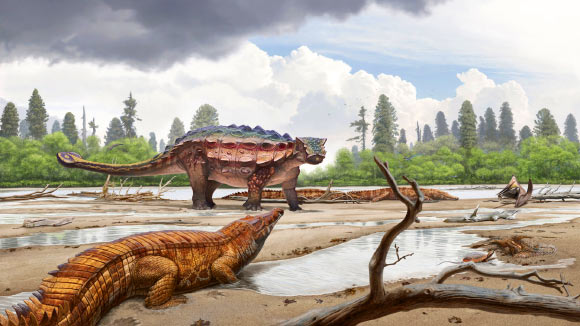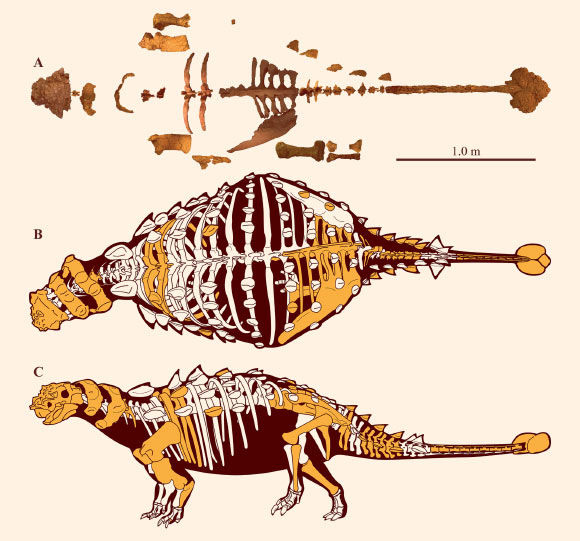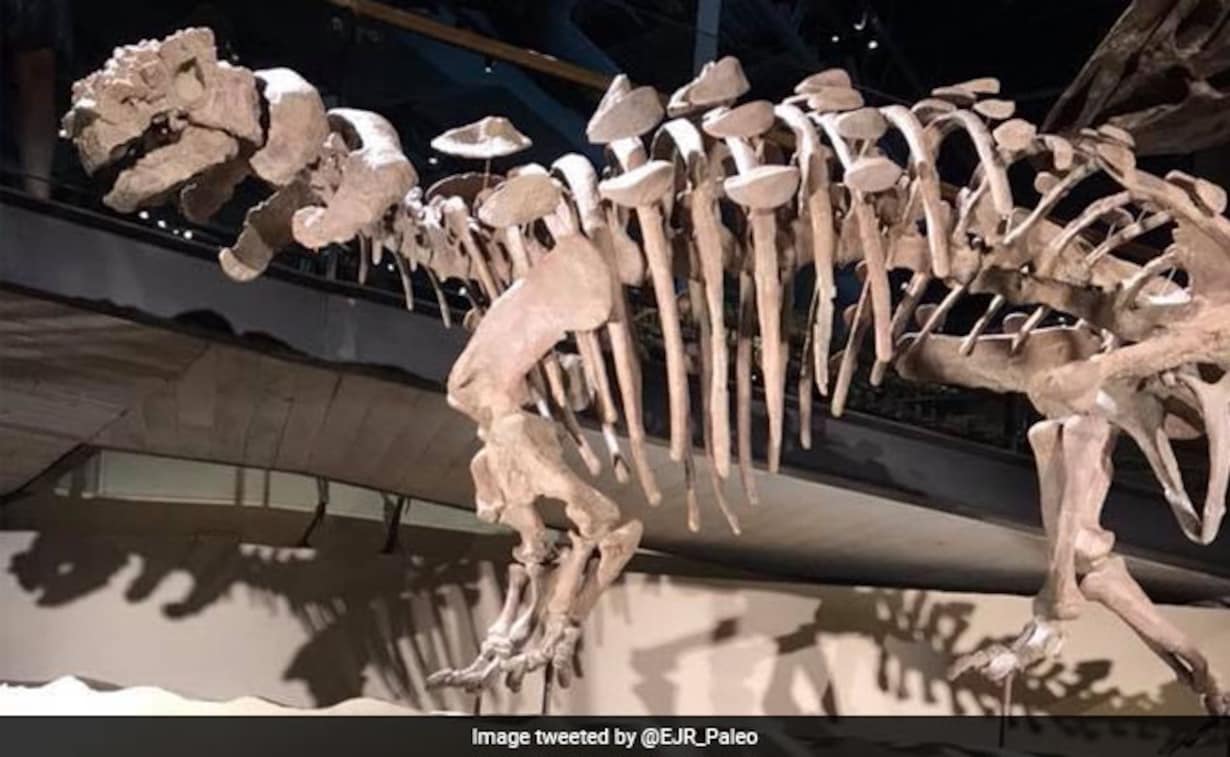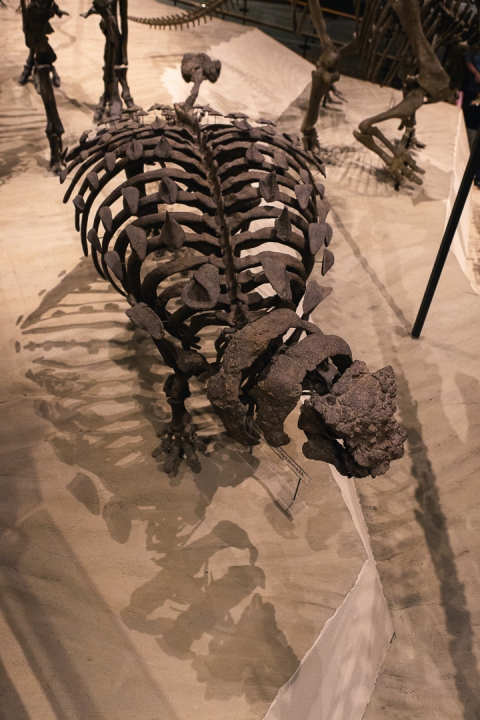A new species of ankylosaurid dinosaur being named Akainacephalus johnsoni has been discovered by paleontologists Jelle Wiersma and Randall Irmis from the University of Utah, Natural History Museum of Utah, and James Cook University. The discovery is reported in the journal PeerJ.

Life reconstruction of Akainacephalus johnsoni. Image credit: Andrey Atuchin, Denver Museum of Nature & Science.
Akainacephalus johnsoni lived approximately 76 million years ago and was 13-16 feet (4-5 m) long and 3.5 feet (1-1.5 m) tall at the hips.
This species belongs to a group of four-legged herbivorous armored dinosaurs called ankylosaurids (family Ankylosauridae) that lived in Asia and western North America during the Late Cretaceous epoch (100-66 million years ago). One of the unique features of these creatures is the presence of a characteristic bony tail club.
The fossilized partial skeleton of Akainacephalus johnsoni — including a complete skull, much of the vertebral column, a complete tail club, several fore and hind limbs elements, and bony body armor — was recovered from the Kaiparowits Formation in Grand Staircase-Escalante National Monument in Kane County, southern Utah.

Preserved elements and skeletal reconstructions of Akainacephalus johnsoni: (A) a composite showing all holotype skeletal material of Akainacephalus johnsoni anatomically arranged in dorsal view; (B-C) cartoon illustrating a full body reconstruction for Akainacephalus johnsoni in dorsal and left lateral view; preserved material in the skeletal reconstructions is highlighted in orange. Image credit: J.P. Wiersma & R.B. Irmis, doi: 10.7717/peerj.5016.
The unique arrangement of bony armor in the shape of small cones and pyramids covering the snout and head of this dinosaur is the key research finding indicating that it is closely related to Nodocephalosaurus kirtlandensis, an ankylosaurid dinosaur that lived about 77 million years ago in what is now New Mexico.
Surprisingly, Akainacephalus johnsoni and Nodocephalosaurus kirtlandensis are more closely related to Asian ankylosaurids such as Saichania and Tarchia than to other Late Cretaceous North American ankylosaurids, including Ankylosaurus and Euoplocephalus. Both of the latter species possess flat skull armor.
“A reasonable hypothesis would be that ankylosaurids from Utah are related to those found elsewhere in western North America, so we were really surprised to discover that Akainacephalus johnsoni was so closely related to species from Asia,” Dr. Irmis said.

Though ankylosaurids originated in Asia between 125 and 100 million years ago, they do not appear in the North American fossil record until around 77 million years ago.
Akainacephalus johnsoni once roamed the southern part of Laramidia, a landmass on the western coast of a shallow sea that flooded the central region, splitting the continent of North America in two.
This caused isolation along western and eastern portions of the North American continent during the Late Cretaceous epoch, between 95-70 million years ago.
“The geographic distribution of Late Cretaceous ankylosaurids throughout the Western Interior was the result of several geologically brief intervals of lowered sea level that allowed Asian ankylosaurid dinosaurs to immigrate to North America several times during the Late Cretaceous, resulting in the presence of two separate groups of ankylosaurid dinosaurs,” Wiersma said.

“This lowering of sea levels exposed the Beringian land bridge, allowing dinosaurs and other animals to move between Asia and North America.”
“Such is exactly the case with Akainacephalus johnsoni; not only is this the first described and named Late Cretaceous ankylosaurid dinosaur from Utah, but this unique animal also strengthens the evidence that distinct northern and southern provincialism existed during the late Campanian stage in Laramidia, because to date, we don’t see this type of ankylosaurid dinosaurs in the fossil record of northern Laramidia.”
“From our observations we can conclude that at least two immigration events took place during Late Cretaceous times when lowered sea levels exposed the Beringian land bridge, connecting Asia with western North America.”
Source: sci.news








